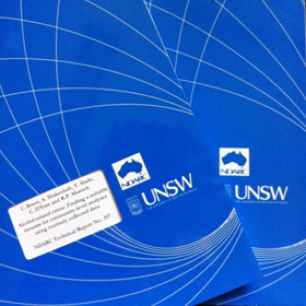NDARC Technical Report No. 42 (1997)
EXECUTIVE SUMMARY
This report presents the findings of the first study of routes of heroin use in Australia, and the first detailed survey investigating heroin use among Indochinese users in NSW. A total of 200 heroin users in South West Sydney were interviewed for the study. The sample was equally split between Caucasian and Indochinese heroin users and those in methadone maintenance treatment and those not in treatement. The study aimed to gather data on the patterns and correlates of heroin use in the two groups, and, in particular, on routes of administration, social and cultural contexts of use, health, crime and use of treatment and other services.
The study documents the use of heroin by smoking or inhalation ("chasing the dragon"), as well as injecting. Prior to this research, it was believed that non-injecting routes of heroin administration were rare: our findings indicate that smoking is a popular route of administration among both Caucasian and Indochinese heroin users. Smoking was much more common among Indochinese heroin users, although many had made a transition to injecting. Many smokers often expressed a fear of injecting, and/or the belief that injecting was more addictive than smoking. Those who favoured injecting believed it provided a better "rush", and was more cost-effective than smoking. Indochinese users were more likely to associate negative identities with the term "junkie" than Caucasian users. Smoking appeared to be more culturally acceptable than injecting among Indochinese users.
Data on risk-taking behaviours, specifically the sharing of injecting equipment, revealed a small but significant risk for the transmission of blood-borne diseases, such as Hepatitis and HIV. This risk appeared greater for the Indochinese group, those who were not in treatment, and those who were more dependent on heroin. Our results also confirm the emergence of a street-based injecting culture in the Cabramatta area: more than half of those interviewed reported injecting in public places, including on the streets, in the stairwells and garages of local flats, public toilets and trains. Although Caucasian users were more likely to have experienced an overdose, this was primarily explained by their use of a greater number of drug classes than the Indochinese sample. Poly drug use and age were positively associated with having experienced a non-fatal overdose. Consistent with other Australian and overseas research, the Caucasian sample were also more likely to have consumed alcohol and/or benzodiezapines prior to non-fatal overdoses.
Our results indicate that Indochinese users were much less likely to have had contact with treatment services, and made less use of community services. The study also found that they were more socially isolated and more immersed in the heroin scene than their Caucasian counterparts. The Indochinese were also much more likely to use illicit methadone to attempt to moderate or detoxify from heroin use than Caucasians, who used it to become intoxicated or because they were "hanging out". It is however, important to note that apparent ethnic differences may be associated with social and ecological factors. For example, elevated risk-taking among the Indochinese may be associated with the situations in which they inject. Nonetheless, there are important cultural differences between the groups which may have implications for service provision. Currently, apart from methadone maintenance, there are limited services for heroin users in this area and there appear to be significant barriers to Indochinese users accessing existing services. There is an urgent need to investigate culturally appropriate treatment and outreach services for this group.


